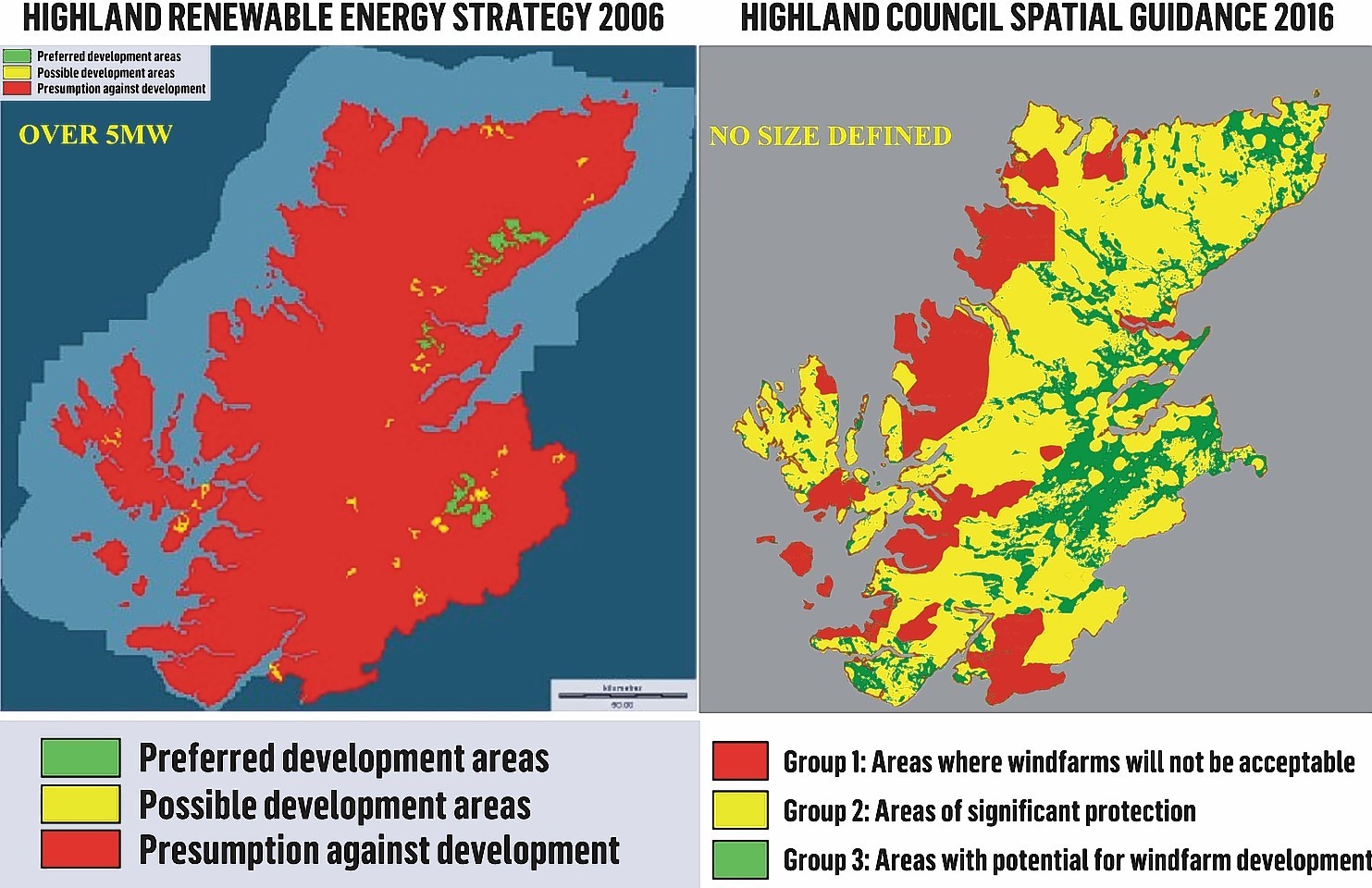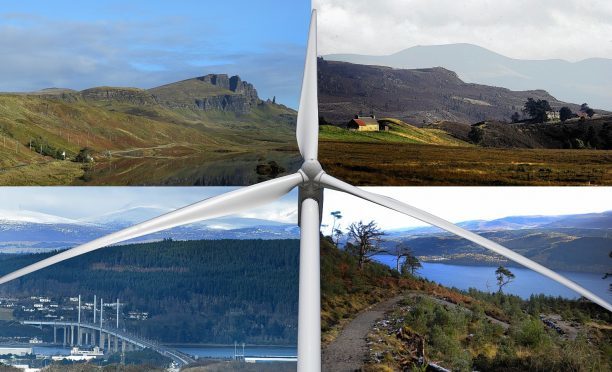Campaigners fear the Highland landscape could be blighted with dozens of new windfarms after a radical review of council planning policy.
It has emerged that iconic views at a long list of scenic locations are no longer protected from development following Scottish Government guidance.
A 2006 map spelling out areas where turbines would or would not be acceptable has been radically redrawn.
Vast areas of red indicating a “presumption against development” that were mapped out in 2006 have shrunk to small pockets, mostly on the west coast.
The contrast in maps has horrified campaigners who fear it could open the floodgates for development.
There is a council caveat that further turbines would not be permitted close to communities, but campaigners claim its “two kilometre” buffer zone is “hopelessly inadequate”.
Stuart Young, a retired construction consultant who has monitored the industry for more than a decade, was appalled by what he found when deciphering the council data.
“The only areas planning authorities are allowed to use the spatial framework to deter windfarms are national parks and national scenic areas. Over the years, the protection to people has been eroded to nothing,” he said.

He pointed out that the overall picture was complicated by the council’s decision to revamp its colour coding.
Beauly-based anti windfarm campaigner Lyndsey Ward said: “The contrast is a sad testament to a decade of SNP destruction of some of our finest landscapes.
“The previous clear ‘traffic light’ coloured map system was replaced by maps featuring insipid pastels in an attempt to reduce the impact of potential development to the casual observer.”
A spokeswoman for the council said: “A change in Scottish Government policy in 2007 signalled the need to begin reviewing the 2006 strategy.
“The maps in 2006 were prepared in a different way and the information they showed differed, too. The 2006 and 2016 maps cannot be simply compared.”
A spokeswoman for the Scottish Government said: “We have clear planning policies to ensure windfarms are developed in appropriate locations. Planning policy now provides additional protection for our national parks and national scenic areas as well as additional scrutiny of proposals in or affecting wild land areas.
“Whilst we need to pursue Scotland’s vast potential to generate power from renewable sources, it’s equally clear we need to do this in a way that protects Scotland’s magnificent natural environment.”
Jim Treasurer of the Friends of the Great Glen environmental group said: “If this map is accurate it does not recognise wild land areas as defined by Scottish Natural Heritage and the Scottish Government as unsuitable for development under any circumstances.”
Stephanie Clark of the trade body Scottish Renewables said: “These two maps show very different things. The 2006 map highlights a range of technical and planning constraints including energy resource and cost while the 2016 map simply shows planning constraints as outlined in Scottish Government planning policy.
“The planning process must strike the right balance between protecting Scotland’s environment and ensuring windfarm proposals are not discouraged or unfairly treated.”
Highlands and Islands Conservative MSP Ed Mountain accused Scottish Government ministers of regularly overruling local planning decisions.
“I wouldn’t be surprised if the council have relaxed their opposition to unsuitable developments,” he said. “This is why we need new councillors to stand up to government interference.”
